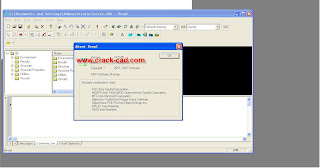Sesam GeniE is a tool for designing and analyzing offshore and maritime structures made of beams and plates. Modelling, analysis and results processing are performed in the same graphical user interface. The use of concept technology makes Sesam GeniE highly efficient for integrating stability, loading, strength assessment and CAD exchange. All data are persistent enabling the engineers to do efficient iterative re-design of a structure. Sesam GeniE for fixed structures The analysis – hydrodynamic as well as strength calculations – and evaluation of results are done within GeniE. GeniE is built for frequent changes in both structural and equipment layout – any modification performed on a concept level will give an automatic updated and consistent analysis model.
For fixed platforms, GeniE can perform static and dynamic linear analysis for structures subjected to wave, wind, current and the equipment layout. It is also possible to include the effects from non-linear pile/soil behaviour. Code compliance of beams may be performed according to API/AISC, API/LRFD, Norsok/Eurocode or ISO (19902). The results may be reported graphically or by using standard report layouts that can be customized (supporting MS Office). Similarly, for plated structures (stiffened as well as un-stiffened) they may be checked against codes like DNV (RP C201.1) and API(2U). Sesam HydroD is a tool for hydrostatic and hydrodynamic analysis. By integrating these tasks significant cost savings may be achieved in the engineering phase since the same panel model may be used by one tool. Sesam HydroD will perform compliance checks against statutory rules for stability including the importance of integrity of the deck tanks. Floating positions may be determined as a result of actual mass and buoyancy or from an automatic compartment filling to satisfy specified position. Hydrodynamic analysis The hydrodynamic analysis may be performed using the actual floating position – and independent of the panel model – to determine worst loading conditions to be used in structural strength analysis. These analyses are normally performed in the frequency domain, but it is also possible to do it in time domain (Linear as well as non-linear). The loads (pressure and accelerations) are automatically used by the structural analysis. The response and loads may be graphically assessed in animations. Sesam DeepC is a tool for mooring and riser design as well marine operations of offshore floating structures. It will perform mooring analysis separately or when including the coupled effects from risers and vessels. Furthermore, Sesam DeepC may be used for riser design where the risers are analyzed separately or when considering coupling effects. Marine operations may be simulated in the time domain for a study of motions and station keeping of multibody systems. For deep water installations, the riser and mooring systems greatly influence the motions of the floater. The floater and slender structures constitute an integrated dynamic system responding to the environmental loading. Because coupling effects are consistently treated, there is no need for the engineers to make assumptions about the damping level (updated for each time step) which is crucial in a non-linear analysis accounting for slender structure restoring, damping and inertia forces. In other words, Sesam DeepC will increase the confidence level of riser and mooring analysis.
 Software training,tutorials,download,torrent
Software training,tutorials,download,torrent